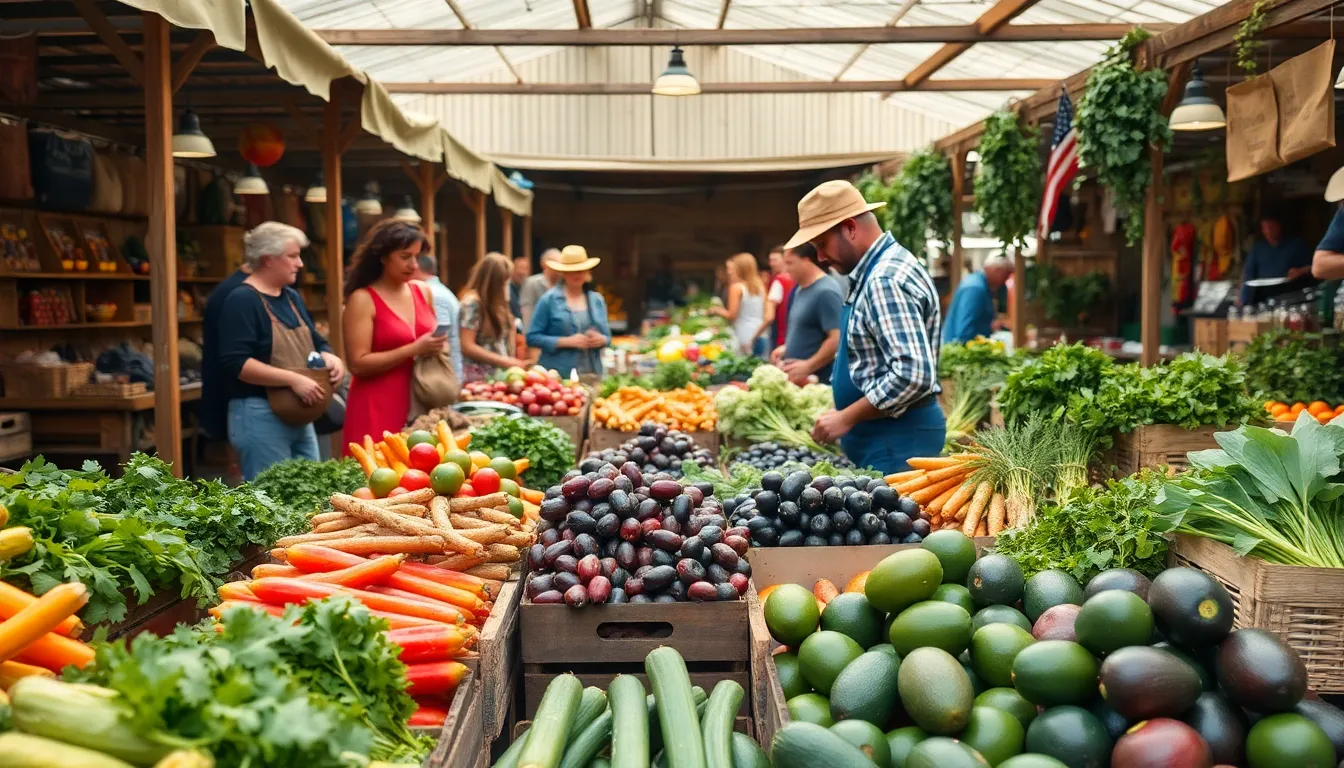Table of Contents
ToggleFrom the spicy street tacos of Mexico to the savory gumbo of Louisiana, regional cuisine offers a delicious passport to diverse cultures and traditions. Each dish tells a story, reflecting the history and ingredients unique to its area. Food lovers know that exploring these culinary treasures is like embarking on a tasty adventure without the need for a suitcase.
Understanding Regional Cuisine
Regional cuisine showcases distinct culinary traditions shaped by geography, climate, and culture. Exploring these unique dishes reveals the richness of local ingredients and cooking methods.
Definition and Importance
Regional cuisine consists of dishes specific to a particular area or culture. Each dish embodies local history, traditions, and techniques. Importance lies in its ability to represent cultural identity and preserve culinary heritage. Understanding regional cuisine fosters appreciation for diverse food traditions. This knowledge promotes respect for local farmers, artisans, and cuisines. Celebrating regional dishes enhances tourism and encourages local economies.
Cultural Influences
Cultural influences shape regional cuisine significantly. Elements such as indigenous ingredients and historical trade patterns contribute to the unique flavor profiles of local dishes. Immigrant communities add their culinary traditions, enriching regional food landscapes. Festivals and food fairs showcase these diverse influences, bringing communities together. Various cooking methods, such as grilling, steaming, or baking, reflect regional preferences and available resources. This blend of cultures encourages innovation while honoring traditional practices. Local customs and rituals often dictate what is served on special occasions, reinforcing the connection between food and culture.
Key Characteristics of Regional Cuisine

Regional cuisine reflects the unique flavors and traditions of a specific area. Nutrition, culture, and history intertwine through these distinct culinary expressions.
Local Ingredients
Local ingredients form the backbone of regional cuisine. Farmers, fishermen, and ranchers supply fresh produce, seafood, and meats specific to their area. For instance, fresh cilantro and avocados create authentic street tacos in Mexico. Geography influences ingredient availability, leading to unique flavor profiles. In Louisiana, spices like cayenne and filé enhance the rich taste of gumbo. Seasonal availability shapes these dishes, encouraging creativity and adaptation. Maintaining local sources bolsters community economies and fosters sustainability.
Traditional Cooking Techniques
Traditional cooking techniques showcase the heritage of a region. Methods often originate from indigenous practices passed down through generations. In many cuisines, slow cooking, smoking, or fermenting highlights flavors uniquely tied to specific cultures. Frying shrimp, for example, plays a crucial role in Southern cooking, enhancing texture and taste. Steaming dumplings is essential in Asian kitchens, preserving moisture and flavor. Craftsmanship in these techniques ensures authenticity and connects individuals to their culinary roots. Emphasizing these methods keeps cultural heritage alive in every bite.
Popular Regional Cuisines
Regional cuisines offer a glimpse into the customs and flavors of diverse cultures. This section highlights notable examples, showcasing their unique ingredients and techniques.
Mediterranean Cuisine
Mediterranean cuisine emphasizes fresh ingredients and vibrant flavors. Olive oil serves as a staple, featuring prominently in dishes like Greek salad and roasted vegetables. Herbs such as basil, oregano, and thyme enhance various meals, while seafood, sourced from the Mediterranean Sea, offers a rich variety. Each country in the region contributes its culinary traditions, resulting in a wonderful array of pastas, breads, and lentil dishes. Regional specialties like Moroccan tagine and Italian risotto exemplify the culinary diversity within Mediterranean cuisine.
Asian Cuisine
Asian cuisine encompasses a wide range of flavors and cooking styles. Japan’s sushi highlights rice, fish, and seaweed, while India showcases spices and curries, creating complex flavor profiles. Ingredients vary greatly, from rice and noodles in many forms to fresh vegetables and meats. Korean barbecue emphasizes grilled meats seasoned with marinades, offering an interactive dining experience. Each culture brings its own techniques and traditions, making Asian cuisine an exciting exploration of culinary art.
Latin American Cuisine
Latin American cuisine presents a fusion of indigenous and immigrant influences. Mexico’s spicy street tacos are famous for their blend of fresh ingredients such as cilantro and lime. Argentinian asado, a barbecue tradition, features grilled meats paired with chimichurri sauce. Dishes like Brazilian feijoada reflect cultural heritage, combining beans, pork, and spices. Each region showcases unique flavors and techniques, resulting in a diverse culinary landscape that emphasizes local produce and traditional cooking methods.
The Role of Regional Cuisine in Culinary Tourism
Regional cuisine plays a vital role in culinary tourism by offering travelers a unique taste of local culture and traditions. Visitors explore flavors that reflect the history, geography, and climate of each area.
Experiencing Local Flavors
Local flavors bring authenticity to culinary experiences. Travelers savor street tacos in Mexico, where fresh cilantro and avocado create a memorable dish. In Louisiana, they delight in savory gumbo, enriched by spices like cayenne and filé. Each bite offers insight into regional ingredients, showcasing the community’s culinary heritage. Knowledgeable chefs often use indigenous techniques that enhance flavors, revealing stories tied to the land. Engaging with local markets and food artisans fosters deeper connections with the culture. Authentic experiences not only satisfy taste buds but also create lasting memories.
Culinary Events and Festivals
Culinary events and festivals celebrate regional cuisine and foster community pride. Major gatherings, such as food fairs and annual festivals, spotlight local dishes and their unique preparation methods. These events often feature cooking demonstrations from skilled chefs who share their culinary secrets, inviting attendees to learn directly. Regional specialties, like Argentinian asado or Brazilian feijoada, showcase the richness of diverse cooking traditions. Attendees connect with locals and discover the cultural significance of each dish. Festivals serve as a vibrant platform for exchanging culinary ideas, enhancing awareness, and promoting regional tourism. Engaging with these events offers a full sensory immersion into the local food scene.
Regional cuisine serves as a vibrant reflection of cultural identity and heritage. Each dish tells a story shaped by history geography and local ingredients. By exploring these culinary traditions individuals gain a deeper appreciation for the diverse flavors and techniques that define each region.
The significance of regional cuisine extends beyond mere sustenance. It connects communities supports local economies and fosters a sense of pride in culinary heritage. Through festivals and culinary tourism people can experience the richness of these food traditions firsthand creating lasting memories and connections. Embracing regional cuisine not only enriches the palate but also celebrates the unique tapestry of global cultures.







